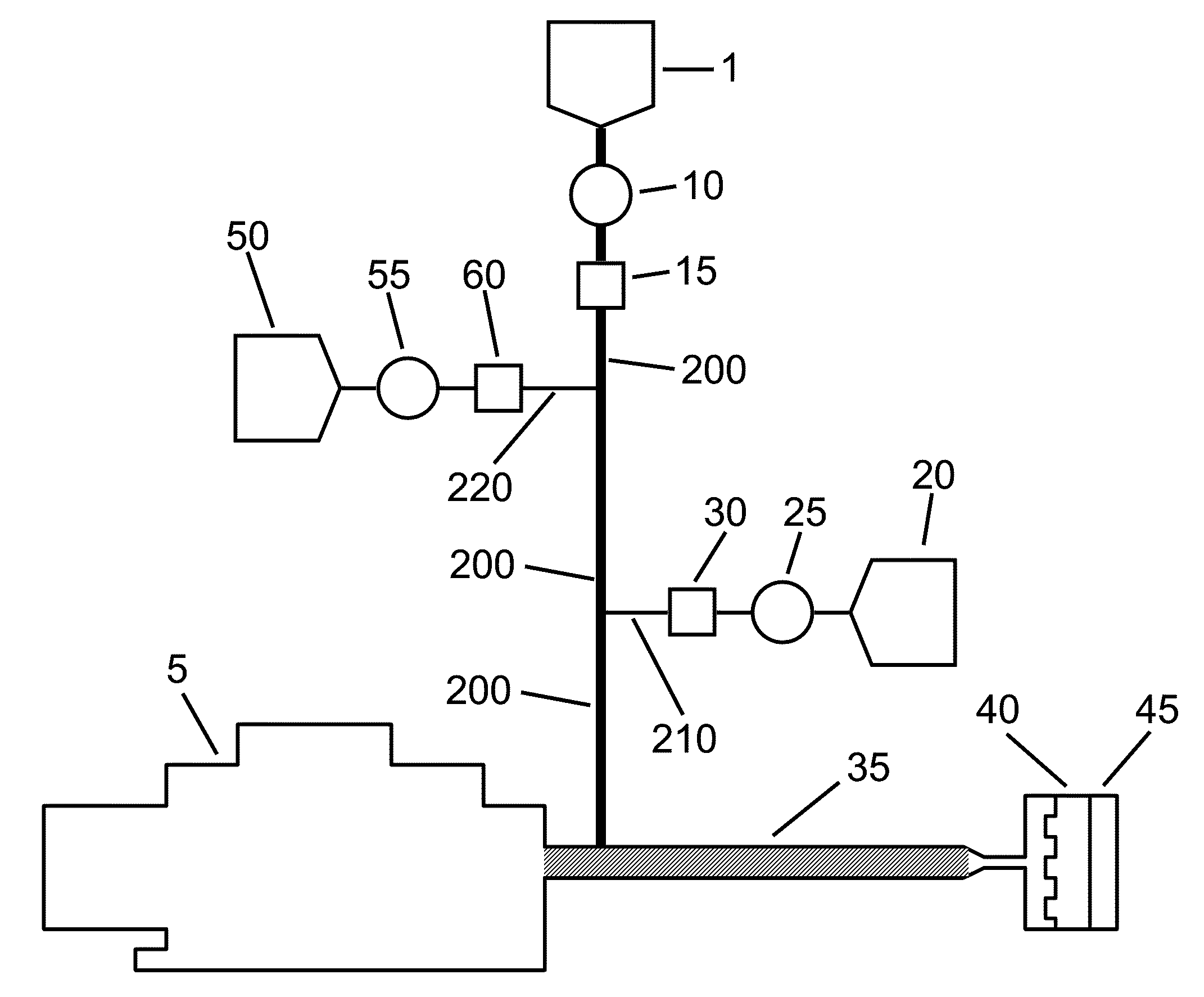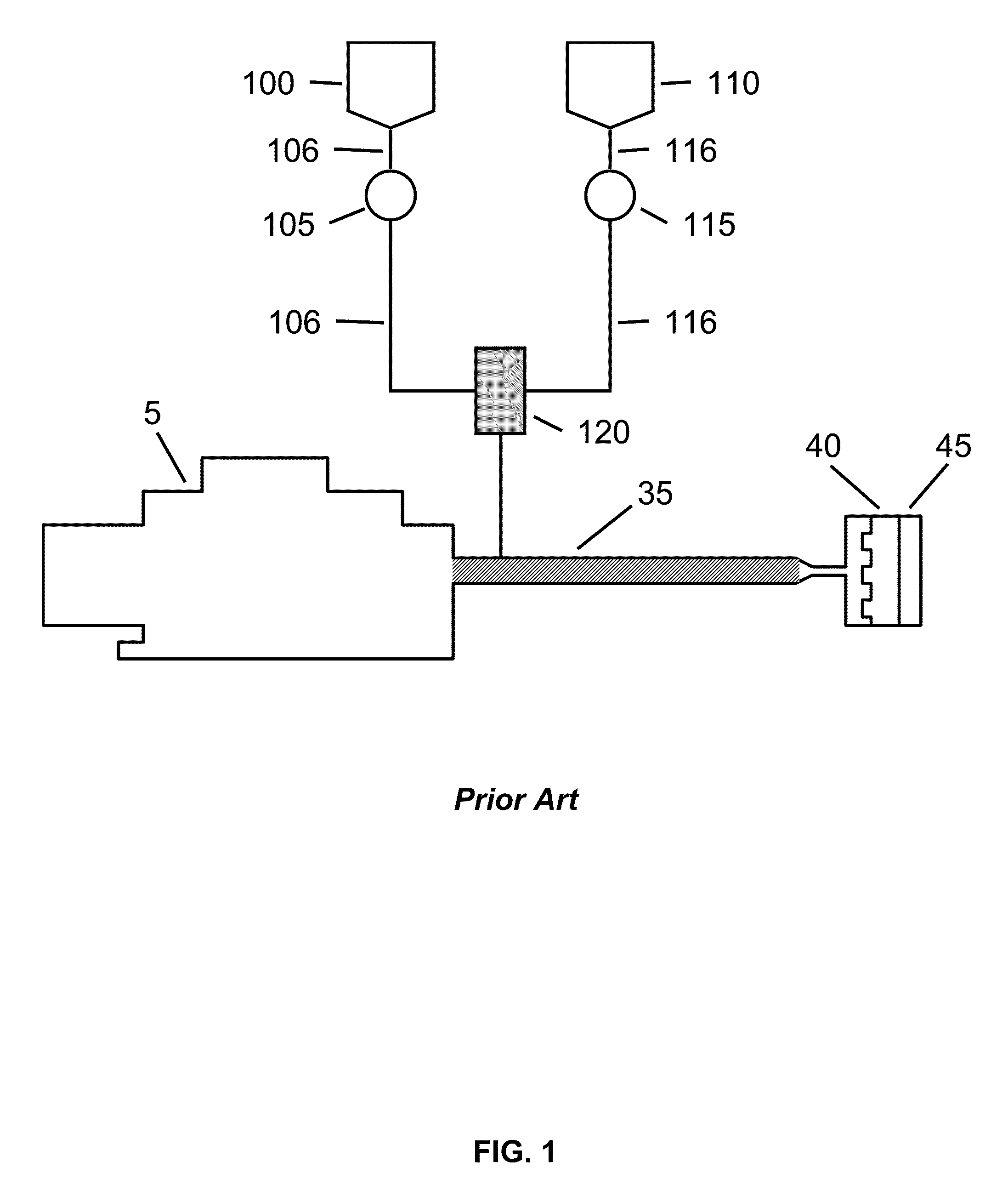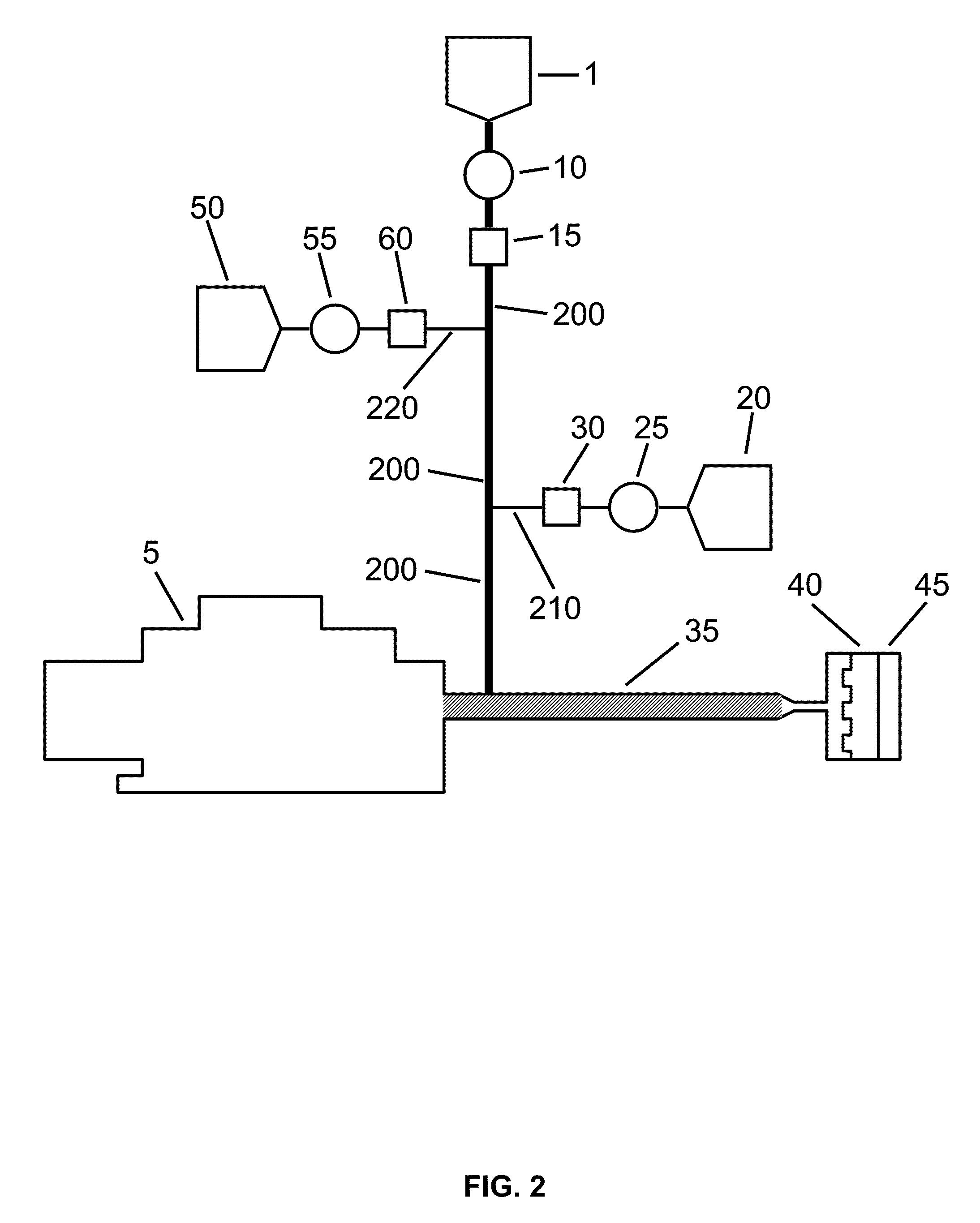Method for Producing Molded Silicone Rubber Products Using Liquid Silicone Rubber
a technology of silicone rubber and liquid silicone, which is applied in the field of preparing molded silicone rubber products, can solve the problems of unbalanced amount of silicone hydride crosslinker present in finished products, two-part lsr process, and erratic injection cure rate, and achieve the effect of slowing down the cure rate of molded products
- Summary
- Abstract
- Description
- Claims
- Application Information
AI Technical Summary
Benefits of technology
Problems solved by technology
Method used
Image
Examples
example 1
Physical Properties of a Standard Liquid Silicone Rubber Sheet
[0175]This EXAMPLE 1 describes the physical properties of a ASTM D395 standard 6 inch by 6 inch by 0.075 inch liquid silicone rubber sheet cured at 5 minutes at 350° F. using Formulation 1 at various concentrations of inhibitor, and compares them against the physical properties of an identical sheet obtained via a standard two part LSR process that employed the same components in Formulation 1 and 100% inhibitor. The data are shown in TABLE 2, below:
TABLE 2StandardSingle LSRSingle LSRTwo-Base withBase withSingle LSRPhysicalPart LSR100% of50% ofBase with 25%PropertiesProcessthe Inhibitorthe Inhibitorof the InhibitorDuro (Shore A)49474849Tear (lb / in)270279302297Tensile (lb / in2)1375140313471282Elongation (%)610547689637100% Modulus324345276288(lb / in2)200% Modulus528566469486(lb / in2)300% Modulus709771625650(lb / in2)
As can be seen from TABLE 2, by using a single LSR base containing pre-mixed vinyl polymer, and silica, with vary...
example 2
MDR Cure Profile
[0176]This EXAMPLE 2 describes the MDR cure profile at 115° C. using Formulation 1 at various concentrations of inhibitor, compared to the MDR cure profile of a standard two part LSR process using the same components in Formulation 1 and 100% inhibitor. The data are shown in TABLE 3, below:
TABLE 3StandardSingle LSRSingle LSRMDR CureTwo-Base withBase withSingle LSRProfile atPart LSR100% of50% ofBase with 25%115° C.Processthe Inhibitorthe Inhibitorof the Inhibitort2 (min.)0.880.470.290.22t10 (min.)0.980.550.360.29t50 (min.)1.150.690.470.39t90 (min.)1.750.950.630.50Time at peak1.220.780.570.49rate (min.)Peak rate30.6934.5638.6543.27(in.-lbs. / min.)MH (in.-lbs.)13.3112.7511.5111.60ML (in.-lbs.)0.010.000.000.02
As shown by the data of TABLE 3, the cure rates are readily modified by altering the inhibitor concentration. As used above, “tx”, where “x” is an integer, denotes the time required to obtain “x”% of the total cure or crosslinking, expressed in minutes.
[0177]Taken to...
example 3
Molding Trial: Silicone Rubber Cap
[0178]This EXAMPLE 3 is a molding trial of a 183 gram silicone rubber cap with a diameter of 3¼ inches and a height of 2¼ inches. The normal production cycle time and temperature using a standard two part LSR process was 250 seconds at 300° F. Using the 50% inhibitor single LSR base of Formulation 1, the cycle time at 300° F. was reduced from 250 seconds to 150 seconds without the need for any postbaking. Below 150 seconds—to as low as 75 seconds—a good cure could be achieved throughout the thickest section of this part with postbaking for 5 minutes at 400° F., with no sign of deformation.
PUM
| Property | Measurement | Unit |
|---|---|---|
| thick | aaaaa | aaaaa |
| thick | aaaaa | aaaaa |
| liquid | aaaaa | aaaaa |
Abstract
Description
Claims
Application Information
 Login to View More
Login to View More - R&D
- Intellectual Property
- Life Sciences
- Materials
- Tech Scout
- Unparalleled Data Quality
- Higher Quality Content
- 60% Fewer Hallucinations
Browse by: Latest US Patents, China's latest patents, Technical Efficacy Thesaurus, Application Domain, Technology Topic, Popular Technical Reports.
© 2025 PatSnap. All rights reserved.Legal|Privacy policy|Modern Slavery Act Transparency Statement|Sitemap|About US| Contact US: help@patsnap.com



